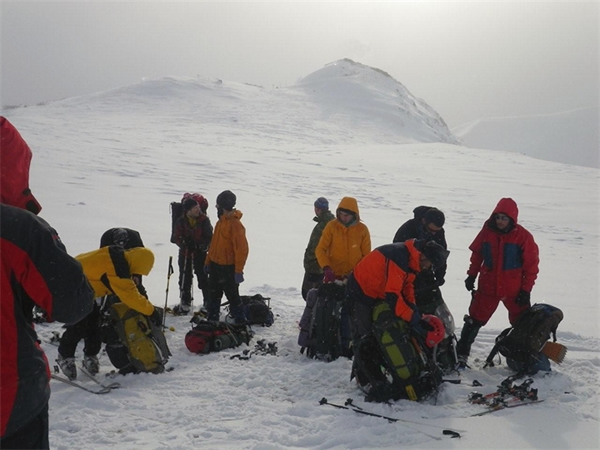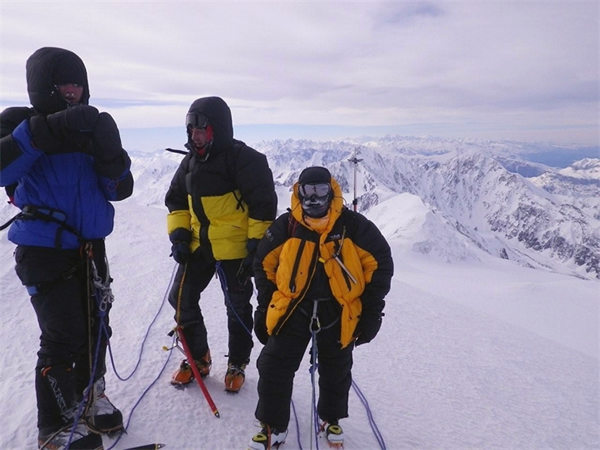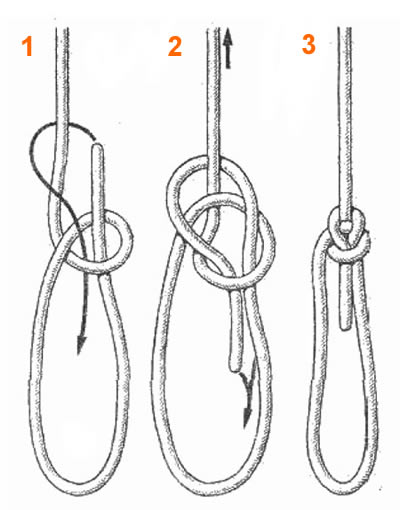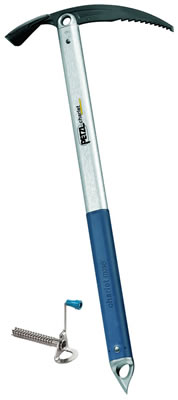
Ice climbing is an activity of ascending ice formations that are inclined. It involves ropes and protected climbing of features such as icefalls, frozen waterfalls and cliffs and rock slabs that are covered with ice refrozen from flows of water. In regards to climbing, ice can be broadly divided into two spheres, Alpine ice and water ice. Alpine ice is found in a mountain environment and requires an approach to reach is often climbed in an attempt to summon a mountain. Water ice is usually found on a cliff or other outcropping beneath the water flow. Alpine ice is frozen precipitation whereas water ice is a frozen liquid flow of water. Most Alpine ice is generally one component of a longer route and often less technical as it has a lot in common with the standard glacier. Water ice is selected largely for his technical challenge. Technical grade is however, an independent device type in both types of ice very greatly inconsistency according to a weather condition. Ice can be soft, hard, brittle or tough. Mix climbing involves both ice climbing and rock-climbing.
A climber chooses equipment based on the slope and texture of the ice. For example, flat ice any good hiking or mountaineering boot can be used. But for serious ice climbing double plastic mountaineering boots are usually used and are crampon compatible. For short, low angle slopes one can use an ice pick to short steps. For a longer and steeper slope crampons are used for a safe climb. Vertical ice climbing is done with crampons and an ice ax. Climbers kick their legs to engage the front points of the crampons in the ice and then swing the axe into the ice above their heads. This technique is known as front pointing. The strength of the ice is often surprising even when the ax only goes in a centimeter. If a climber is leading, they place ice screws as protection on the way up. Most mountaineers only consider the last scenario true ice climbing. All less steep variations is winter mountaineering.

Some important techniques and practices common in rock-climbing that are also employed in ice climbing include knowledge of rope systems, tying in, belaying, leading, abseiling, and lowering. Beginners always need to learn these techniques before attempting to ice climb.
Rope systems - single, double and twin rope are the three main rope systems using ice climbing. The single rope system is suited for straight climbing and is the most common. The double rope system is a more flexible system than the single rope and uses two twin ropes in a single rope system generally used for longer multipage routes double and twin rope technique is used more frequently in ice climbing as he systems are more redundant.

Tying in- this entails attaching your rope to the climbing harness. This technique is a must when leading a climb or belaying. A commonly used tie and not is a figure of eight follow through. The bowline and thumb knot are often preferred as they are easier to untie when frozen.
Belaying - this is a climbing technique where running belays or fixed belays are used. A running belay is similar to a running belay on rock. The leader of the climb puts protection and clips the rope through it and the next climber puts away the protection. There should be at least two points of protection between the leader and the next climber. Fixed belays require a belayer, a belay anchor and points of protection. A belay anchor is attached to a cliff, which supports a belay or top rope. In using either a running or fixed belay you need to have enough knowledge regarding boot/screw belay techniques.
Leading - this refers to the act of leading a climb. This ice climbing technique entails putting protection while ascending. Leading is done in sections. The leader places the protection and then when they reached the top of the pitch they build a belay anchor with which to belay the second climber. While the second climbs, they remove the protection placed by the leader and they both proceed to the second pitch.

Abseiling - this is also called rappelling. It uses a fixed rope to descend. This technique is not only used to go down but can be used when trying new climbing routes and there is a difficult access to the start of a climb. Careful execution is important, as there are possibilities of jammed ropes and ropes becoming severed after contact with sharp edges. Lowering - this is one of the most common methods of getting down. A belayer is at the base of the vertical wall and ensures that the climber is lowered safely. This climbing technique is used when going down routes where there are short, steep walls. There are different techniques so learn the skills from expert climbers before attempting them yourself. Protecting ice - the most common protection for ice climbing is an ice screw. I screws or hollow tubes with sharp teeth on the front end, a hanger at the back to clip into a threading around the tube. They are screwed into the ice and provide very strong protection. The strength of ice screw placements can vary greatly. Ice climbers use the ice itself as protection. The most two common techniques are the V thread and an ice bollard. In a V thread there are two intersecting tunnels that are boarded to the ice to form a V-shaped tunnel. A sling is then threaded through the V and tied in a loop. The rope is passed through the sling. An ice bollard is chipped away to create a teardrop shape. A sling is placed around it and the rope through the sling. When ice conditions permit the sling may be dispensed with. Before getting into real ice, try indoor ice climbing. Groupon offers tons of places. And with Groupon coupons it’s really easy to save up to 80% off your training sessions.
Ice climbing grades
Waterfall ice grading - focuses on the waterfall ice rating system used in the Canadian Rockies. Test piece examples are given. These tend to be subjective and do not reflect the difficulty of a route at any given time. This is due to the cleaning of chandelier ice and creation of hooks, which are pockets that are formed by the tools picks. Routes with high flow seeps are easier as the season progresses due to the increase in volume of ice. Low flow seeps form early in the season when the flow is good from late in summer heat and then slow down with the deepening winter frost. Grading in the Canadian Rockies focuses on the steepness of a pitch rather than the feeling of difficulty. The common use of a”+" is a designation to indicate a higher level of technicality. WI2 - WI5 is the degree of technicality, the lowest being the low angled to the highest being near vertical. The grading continues with even more technical at WI5+ all the way to WI7 was sustained and overhanging with no rests.
